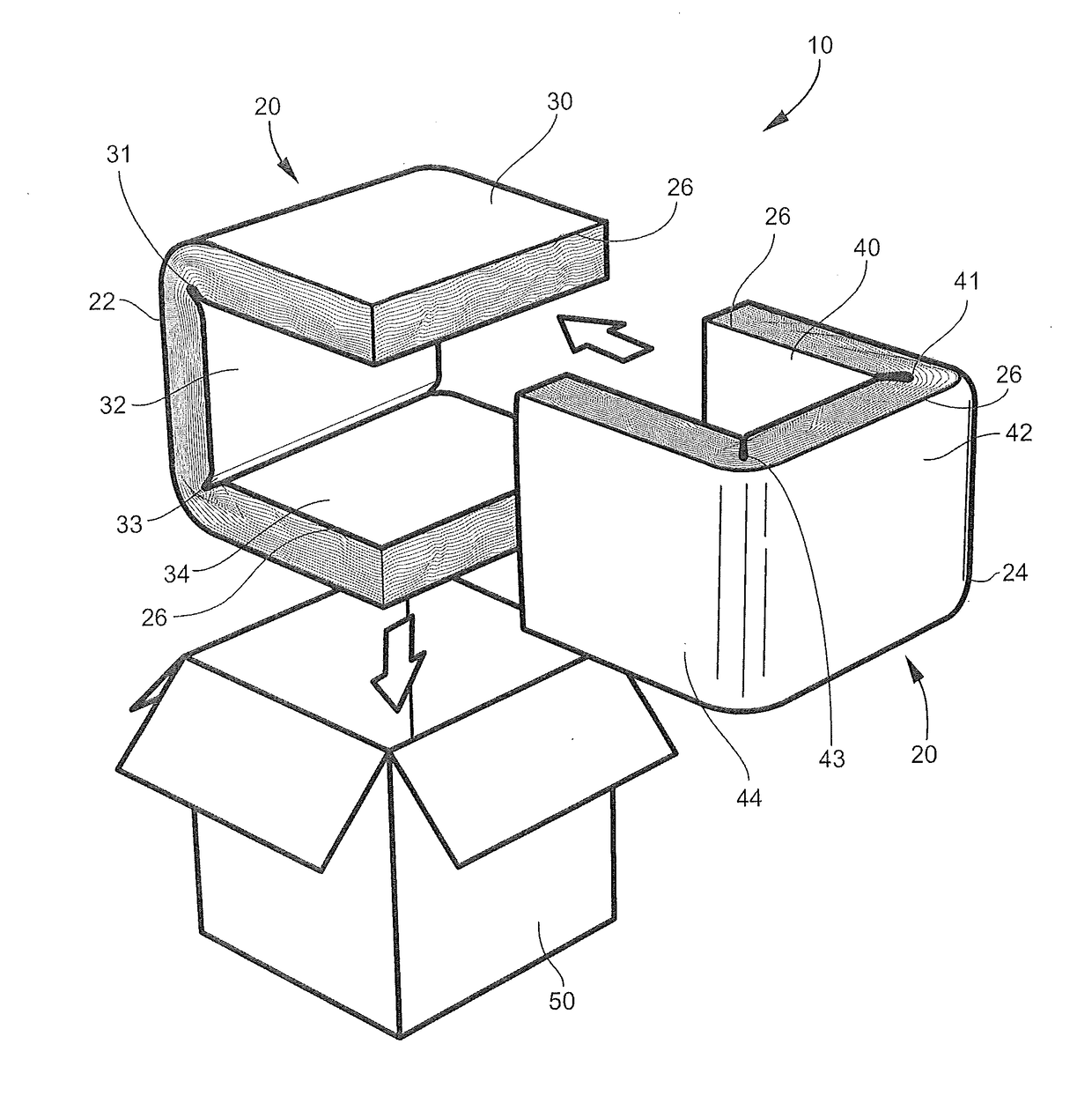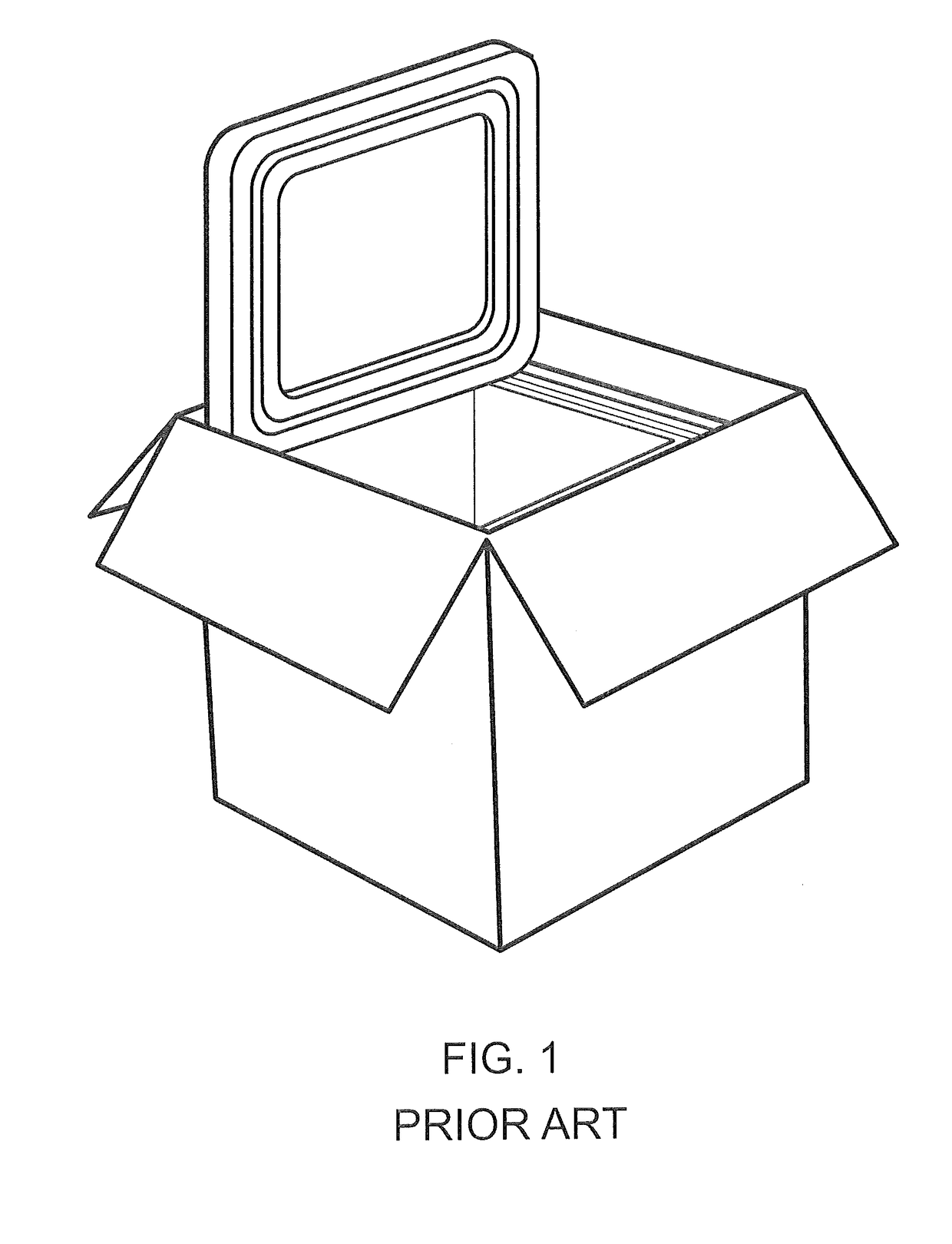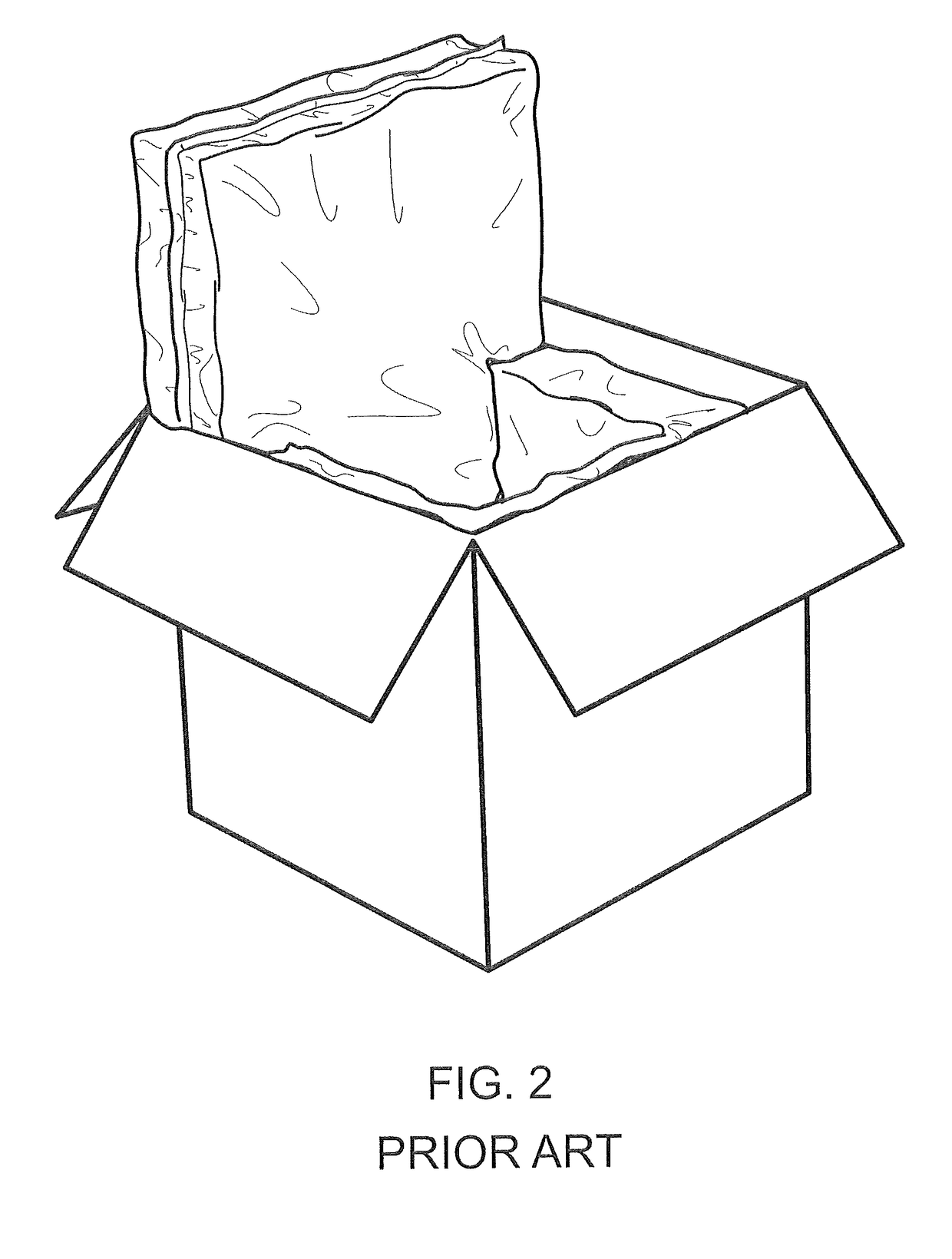Insulated container
a technology of insulated containers and containers, which is applied in the field of containers, can solve the problems of affecting the quality of products, affecting the safety of consumers, and affecting the safety of products, and achieves the effect of minimizing negative impacts on the environment and efficient and economical manufacturing
- Summary
- Abstract
- Description
- Claims
- Application Information
AI Technical Summary
Benefits of technology
Problems solved by technology
Method used
Image
Examples
Embodiment Construction
[0044]FIG. 1 and FIG. 2 show prior art insulated containers. In particular, FIG. 1 shows a prior art insulated container having a rigid foam insulation layer. FIG. 2 shows a prior art insulated container having an insulation layer which is wrapped in plastic.
[0045]Generally, FIGS. 3 through 10, show embodiments of the invention with insulation layer 20 having a natural fiber lamination layer 26 applied to contact surfaces. The contact surfaces are surfaces which may come into contact with contents of the container. Generally, FIG. 13 shows an alternate embodiment of the invention where there is no natural fiber lamination layer and the fibers of the insulation layer 20 are exposed to the contents of the container. The embodiment utilizing the natural lamination layer 26 may be preferred to the embodiment of FIG. 13 when a shipper desires that the contents not come into contact with the insulation layer, such as when shipping raw, unwrapped produce. The natural fiber lamination layer...
PUM
| Property | Measurement | Unit |
|---|---|---|
| pH | aaaaa | aaaaa |
| temperature | aaaaa | aaaaa |
| temperature | aaaaa | aaaaa |
Abstract
Description
Claims
Application Information
 Login to View More
Login to View More - R&D
- Intellectual Property
- Life Sciences
- Materials
- Tech Scout
- Unparalleled Data Quality
- Higher Quality Content
- 60% Fewer Hallucinations
Browse by: Latest US Patents, China's latest patents, Technical Efficacy Thesaurus, Application Domain, Technology Topic, Popular Technical Reports.
© 2025 PatSnap. All rights reserved.Legal|Privacy policy|Modern Slavery Act Transparency Statement|Sitemap|About US| Contact US: help@patsnap.com



